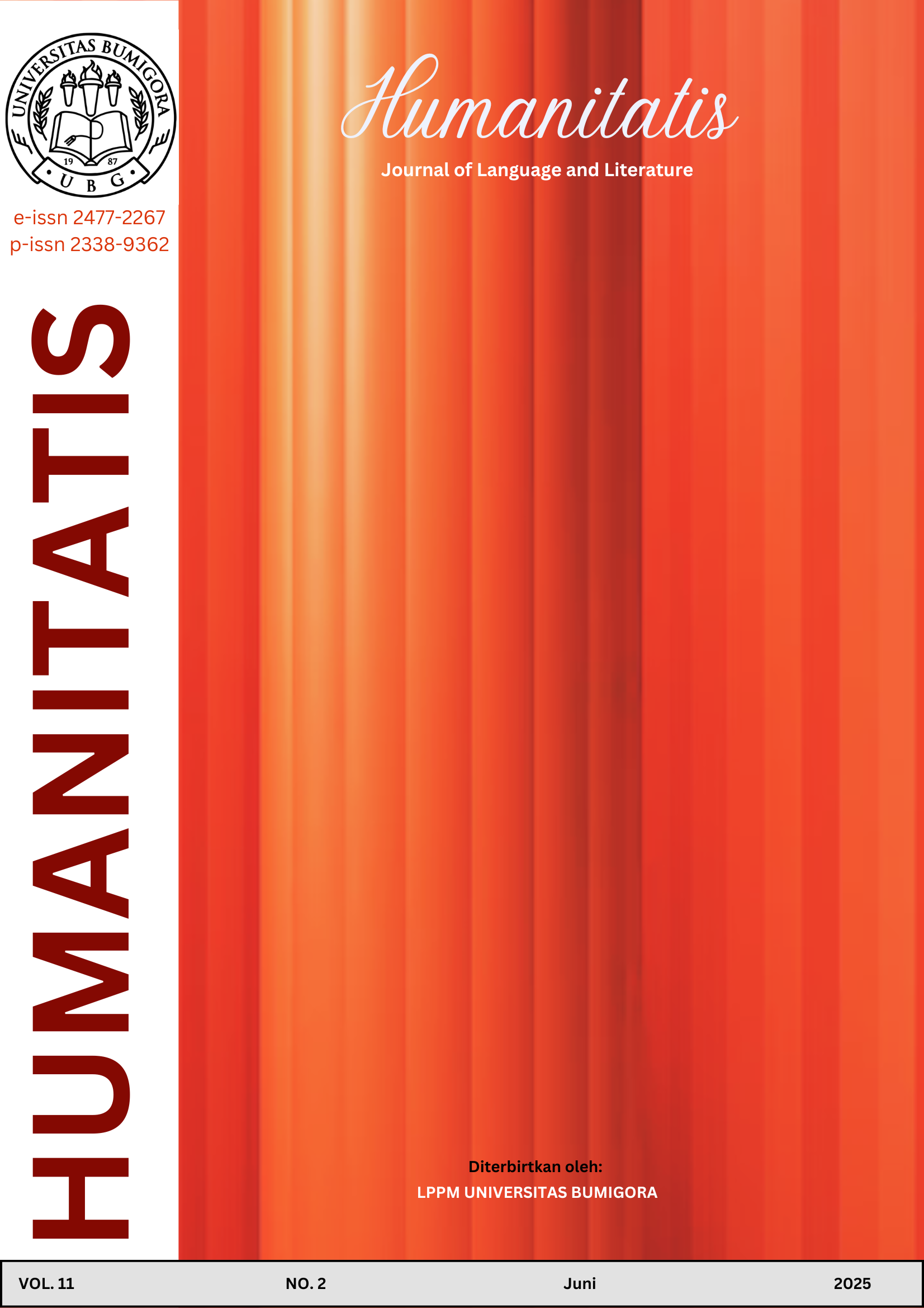Representation of Human Life in Suicide Silence’s You Only Live Once Music Video
DOI:
https://doi.org/10.30812/humanitatis.v11i2.4624Keywords:
Music Video, Semiotic, Hidden Messages, Social Life, RepresentationAbstract
Music is delivered through audio and in the form of a video called a Music Video. Music videos serve as a marketing tool and often as a means of open expression to the general public. This study aims to describe the relationship between signs and meanings in the music video You Only Live Once by Suicide Silence. This research employs a descriptive qualitative method to describe data analysis relevant to the topic matter of the study. Based on the result, it can be concluded that the signs contained in the You Only Live Once music video by Suicide Silence. Signs in the music video that represent the human struggle in social life include humans entering a new phase in social life, differences and diversity in each individual, some security forces who abuse their power over the community, mad scientists who abuse their intelligence for their interests, the needs and requests of the child, the practice of prostitution in social life, criminals who are ready to disrupt the security. This elder generation disagrees with the younger generation, the wife’s demands and needs, and death, which can occur at any time.
References
Akin, D. (2003). The seven basic needs of a wife.
Alaslan, A. (2022, May). Metode penelitian kualitatif. https://doi.org/10.31237/osf.io/2pr4s
Angeler, D. G. (2016). Heavy metal music meets complexity and sustainability science. SpringerPlus, 5(1), 1637. https://doi.org/10.1186/s40064-016-3288-9
Anggraeni, P. A. (2023). Representasi realitas kehidupan idola dan penggemar dalam dua versi video musik Ditto oleh NewJeans. Jurnal Bébasan, 10(2), 181–195. https://doi.org/10.5281/zenodo.10275436
Sembiring, M. Z. E., Ramadan, F., Aulia, F., Hasanah, N., & Baeha, F. (2023). Semiotics analysis of music video High Low by The Unlikely Candidates using Ferdinand de Saussure’s semiotic theory. Talenta Conference Series: Local Wisdom, Social, and Arts (LWSA), 6(3), 58–68. https://doi.org/10.32734/lwsa.v6i3.1769
Sihabuddin, S., Itasari, A. A., Herawati, D. M., & Aji, H. K. (2023). Komunikasi musik: Hubungan erat antara komunikasi dengan musik. Translitera: Jurnal Kajian Komunikasi dan Studi Media, 12(1), 55–62. https://doi.org/10.35457/translitera.v12i1.2679
Singh, D. (2022). The causes of police corruption and working towards prevention in conflict-stricken states. Laws, 11(5), 69. https://doi.org/10.3390/laws11050069
UNODC. (2019). E4J university module series: Crime prevention and criminal justice.
Utami, S. N. (2023, July). 15 pengertian seni musik menurut para ahli.
Wedlock, E., & Tapley, J. D. (2016, March). What works in supporting victims of crime: A rapid evidence assessment. Crown Copyright.
Weiss, D., & Zhang, X. (2020). Multiple sources of aging attitudes: Perceptions of age groups and generations from adolescence to old age across China, Germany, and the United States. *Journal of Cross-Cultural Psychology, 51*(6), 407–423. https://doi.org/10.1177/0022022120925904
Wicaksono, W. W. (2024). A study of semiotic in music video Secret Love Song. Journal of English on Language and Literature, 2(3), 290–298.
Womack, A. (2021, April). A psychologist’s advice on how to cope with life transitions.
World Health Organization. (2011). Global report on ageism (Technical Report). World Health Organization.
Yuwita, N. (2018). Representasi nasionalisme dalam film Rudy Habibie (Studi analisis semiotika Charles Sanders Pierce). Jurnal Heritage, 6(1), 40–48. https://doi.org/10.35891/heritage.v6i1.1565
Downloads
Published
Issue
Section
License
Copyright (c) 2025 Muhammad Zahran Gibran

This work is licensed under a Creative Commons Attribution 4.0 International License.
















